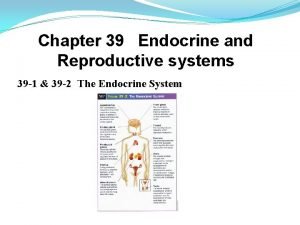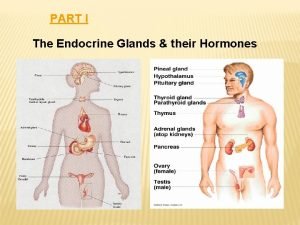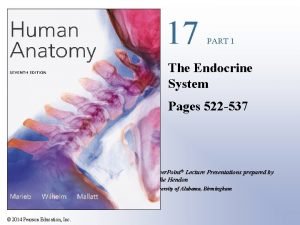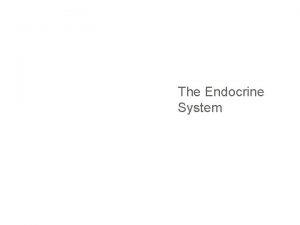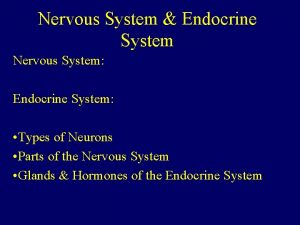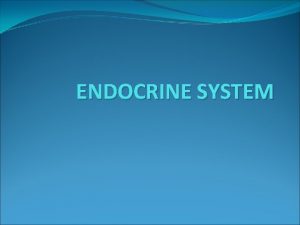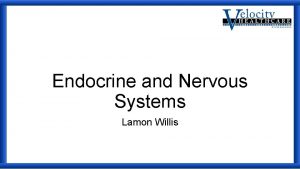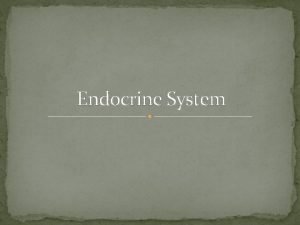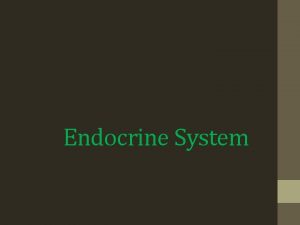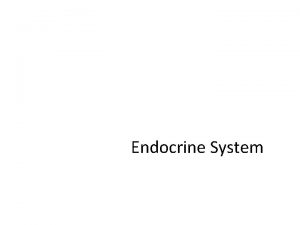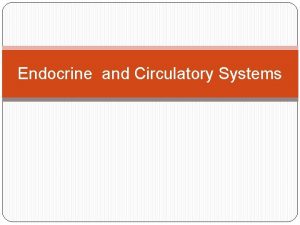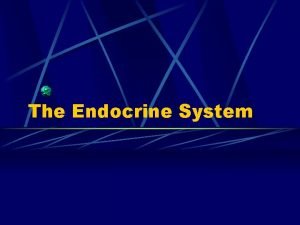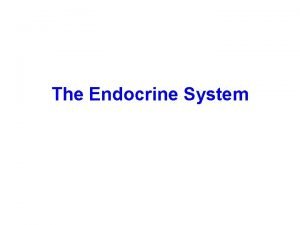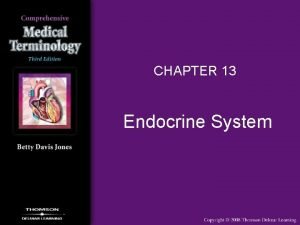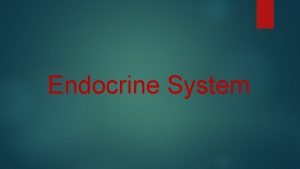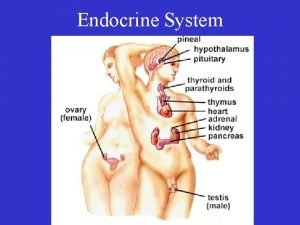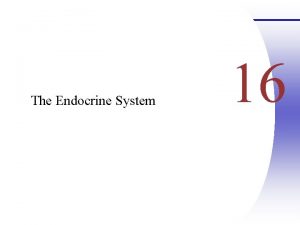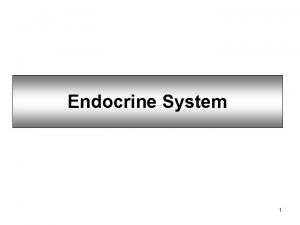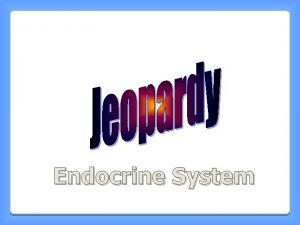The nervous system Nervous and endocrine systems The























- Slides: 23

The nervous system

Nervous and endocrine systems The nervous and endocrine glands systems interact to control and coordinate the body’s -responses to change in its environment -growth & development -reproduction

A. Nervous system: Nervous control depends mainly on the functioning of neurons (nerve cells).

1. Stimulus: a change in the external or internal environment which initiates and impulse. examples: vision, smell, taste, pressure, temperature, pain, equilibrium. • A demonstration

2. Impulse: an electro-chemical charge generated along a neuron. • Electro-inside neuron • Chemical: between neurons http: //en. wikipedia. org/wiki/Action_potential http: //ffden-2. phys. uaf. edu/212_fall 2003. web. dir/Casey_Adamson/Personal%20 Web%20 Page. htm

3. Receptors: structures specialized to detect certain stimuli 4. Response: a reaction to a stimulus http: //meredithbond. com/blog/stimulus-and-response/

5. Neuron: the basic cellular unit of the nervous system (specially designed for the transmission of impulses. ) Our brain has millions of neurons.

Neuron

Neuron a. Terminal branches: ends of axons that secrete neurotransmitters. b. Synapse: gap between adjacent neurons (terminal branches of one neuron and the dendrites of the next) or the gap between neuron and effector.

6. neurotransmitter • Neurotransmitter: chemical substance which starts the transmission of the nervous impulse (Acetylcholine degraded by cholinesterase)

Neurotransmitter con’t • Acetylcholine is the most common neurotransmitter. • Dopamine is another neurotransmitter that brings pleasure. http: //www. musculardystrophy. org/research/news/3262_study_compares_two_treatments_for_myasthenia_gravis

Why do you think the nervous system is important?

How do neurotransmitters work to transmit the nervous impulse in humans? 1. Nervous impulse travels down an axon to the tips of a terminal branch. 2. The terminal branch secretes neurotransmitter into the synapse gap. 3. The neurotransmitter travels to the next neuron and causes depolarization of that neuron-thus a new nervous impulse is started in the next neuron.

video Synapse Structure and Function • http: //www. youtube. com/watch? v=r. Wrnz. Ci. M 7 A

• Neurons may release chemicals to stimulate each other. An example of a muscle being stimulated by a neuron appears after the reflex path pictured in number four in the diagram.

• More complex animals have a central nervous system which includes a brain and a nerve cord (spinal cord). • Brain: a large mass of neurons located in the cranial cavity—contains three major divisions.

• Cerebrum: center for voluntary activity; interprets sensory impulses, initiates some motor activities, and responsible for memory, thinking, and reasoning.

• Cerebellum: coordinates motor activities and aids in maintaining balance. • Medulla: controls involuntary activities such as breathing, heartbeat, blood pressure and peristalsis ( is part of the brain stem),

Video The nervous system http: //www. youtube. com/watch? v=sjy. I 4 Cm BOA 0

Spinal cord: lies within, and is protected by, the vertebrae of the spinal column. http: //www. quantumday. com/2012/06/walking-again-after-spinal-cord-injury. html

-- is continuous with the brain coordinates activities between the brain and other body structures (bridge between the brain and the peripheral nervous system) -- it is also a center for reflex actions.

Peripheral nervous system -- is located outside the central nervous system and consists of the nerves extending throughout the body. http: //www. umm. edu/imagepages/8679. htm

Peripheral nervous system 1) somatic: voluntary control 2) automatic: involuntary
 Adh function
Adh function Endocrine system and nervous system
Endocrine system and nervous system Differences between nervous system and endocrine
Differences between nervous system and endocrine Mechanism of hormone action
Mechanism of hormone action Comparison of endocrine and nervous system
Comparison of endocrine and nervous system Endocrine and nervous system comparison
Endocrine and nervous system comparison Which neuron is rare
Which neuron is rare Fundamentals of the nervous system and nervous tissue
Fundamentals of the nervous system and nervous tissue Processes of neuron
Processes of neuron Endocrine system and reproductive system
Endocrine system and reproductive system Section 39-4 fertilization and development
Section 39-4 fertilization and development Lympathic
Lympathic Oxication
Oxication Chapter 45 hormones and the endocrine system
Chapter 45 hormones and the endocrine system Nervous system and digestive system
Nervous system and digestive system Chapter 16 matching questions 20-24
Chapter 16 matching questions 20-24 Adenohypophysis
Adenohypophysis Steroids endocrine system
Steroids endocrine system Endocrine system fact
Endocrine system fact Rat urinary system
Rat urinary system Endocrine system pearson
Endocrine system pearson Chapter 7 13 endocrine system
Chapter 7 13 endocrine system Stimulus endocrine system
Stimulus endocrine system Humoral stimulus
Humoral stimulus










